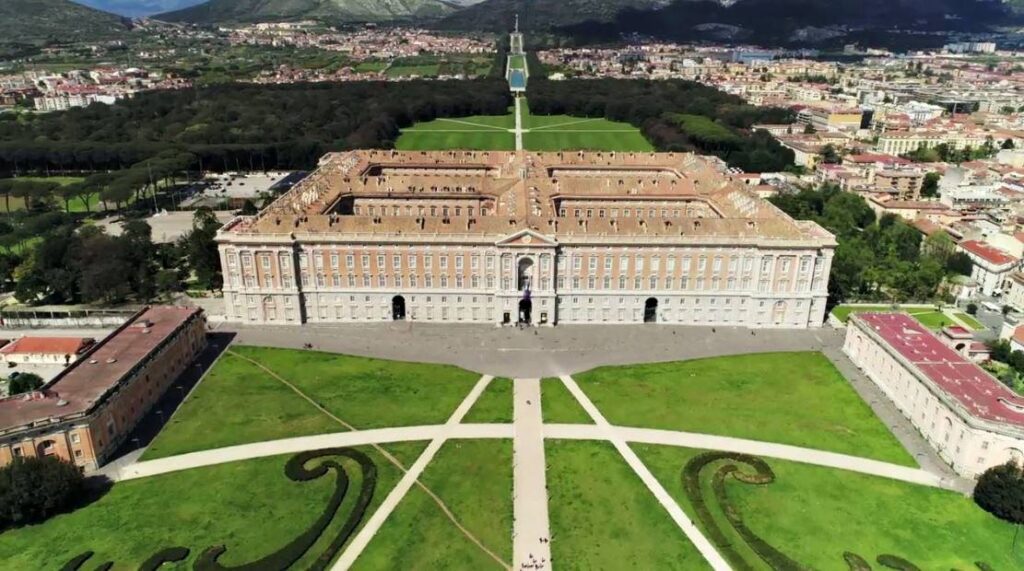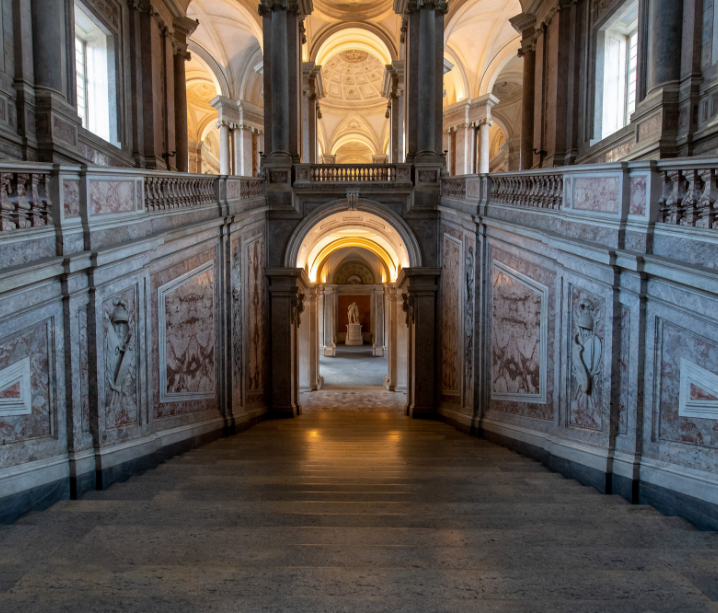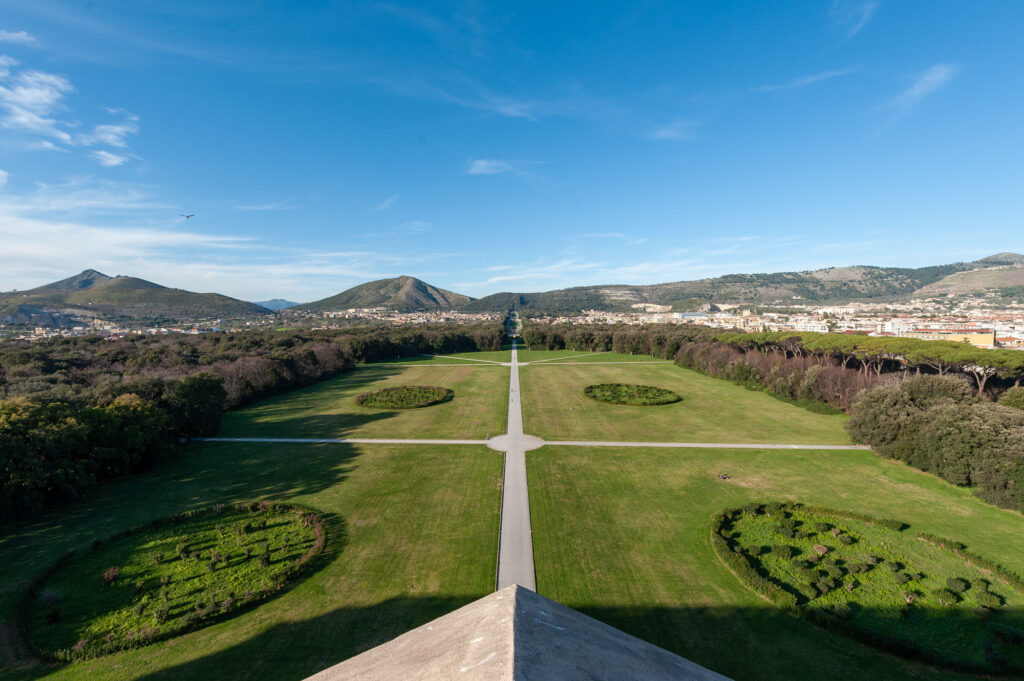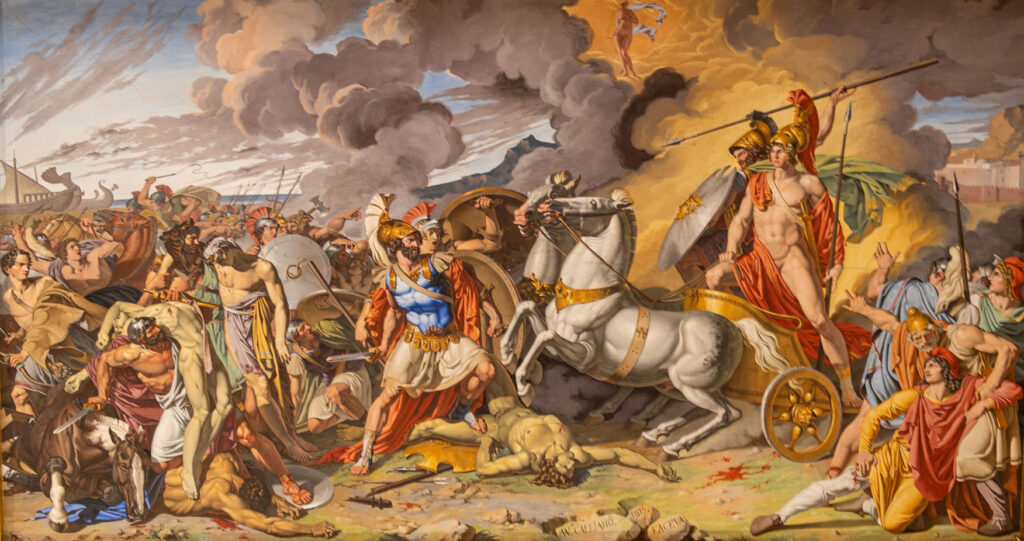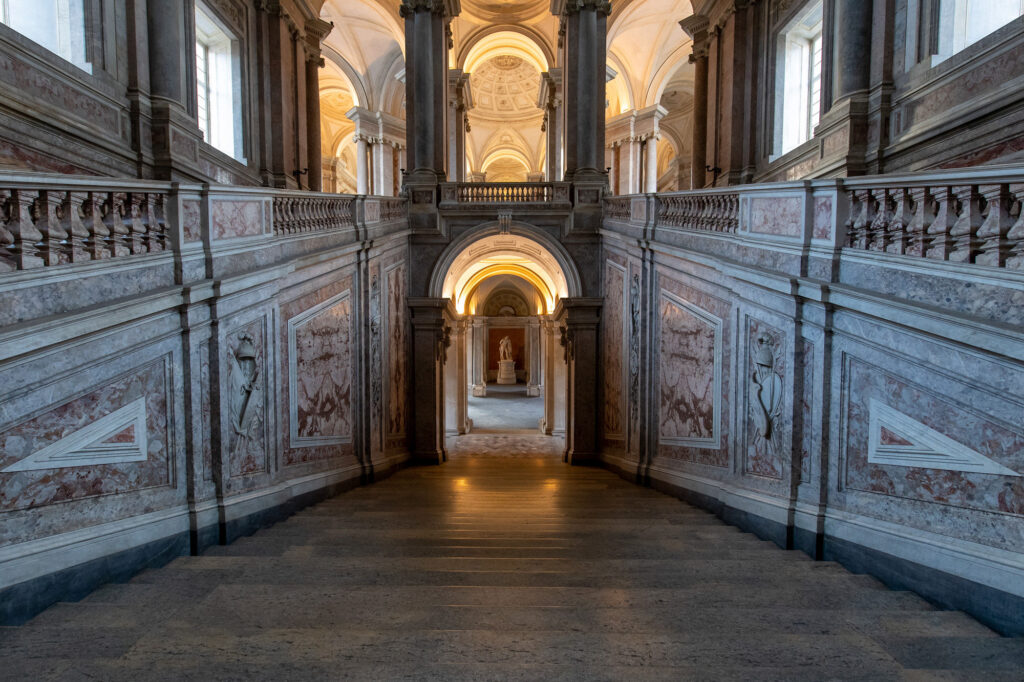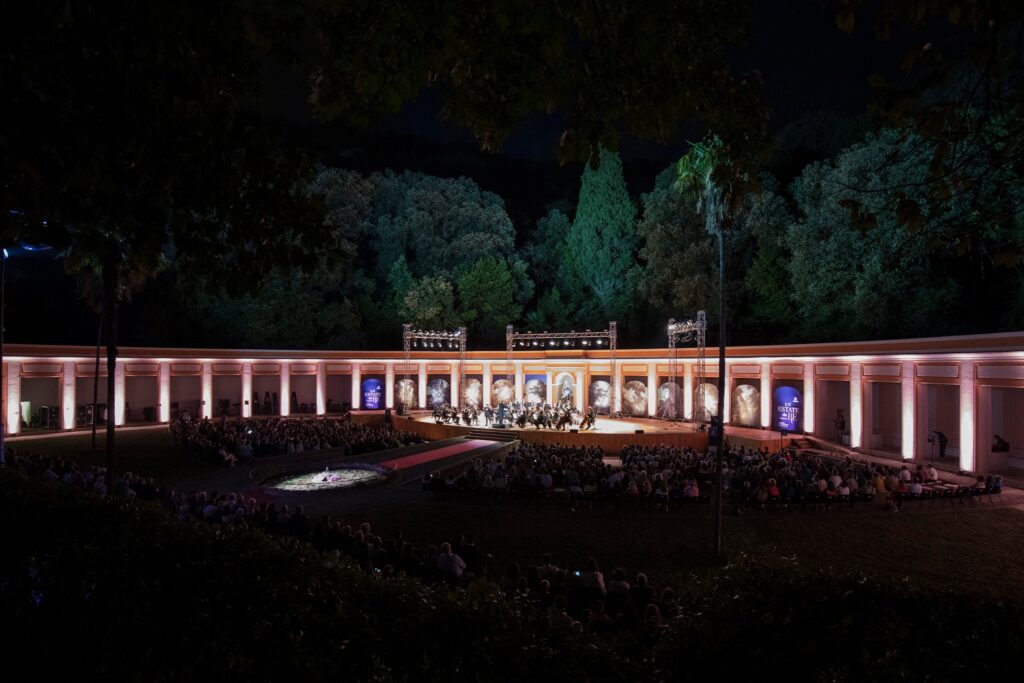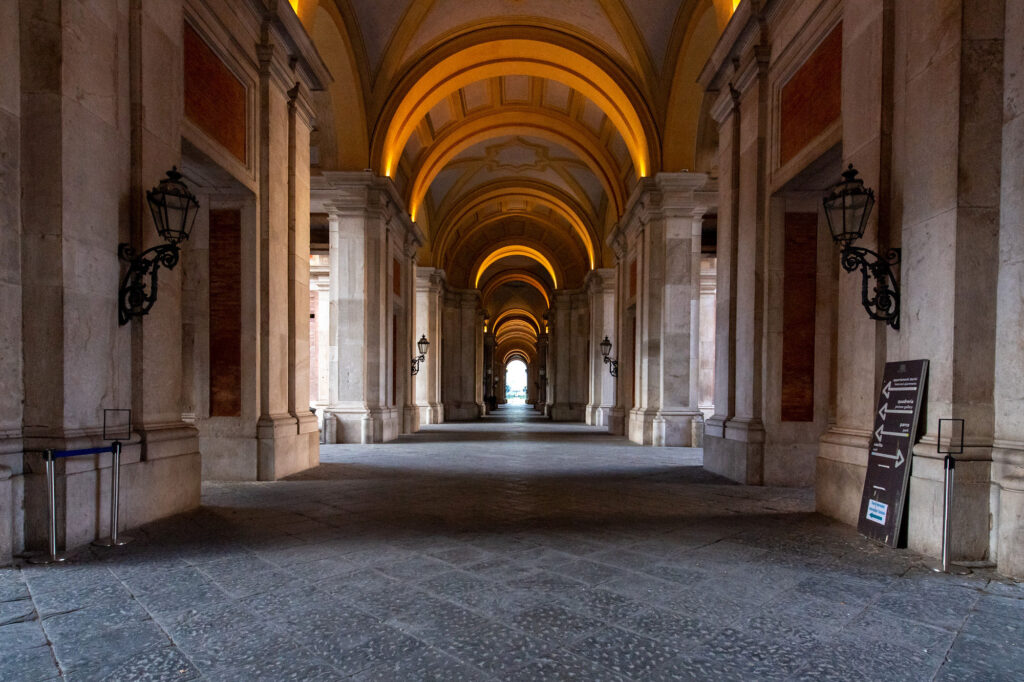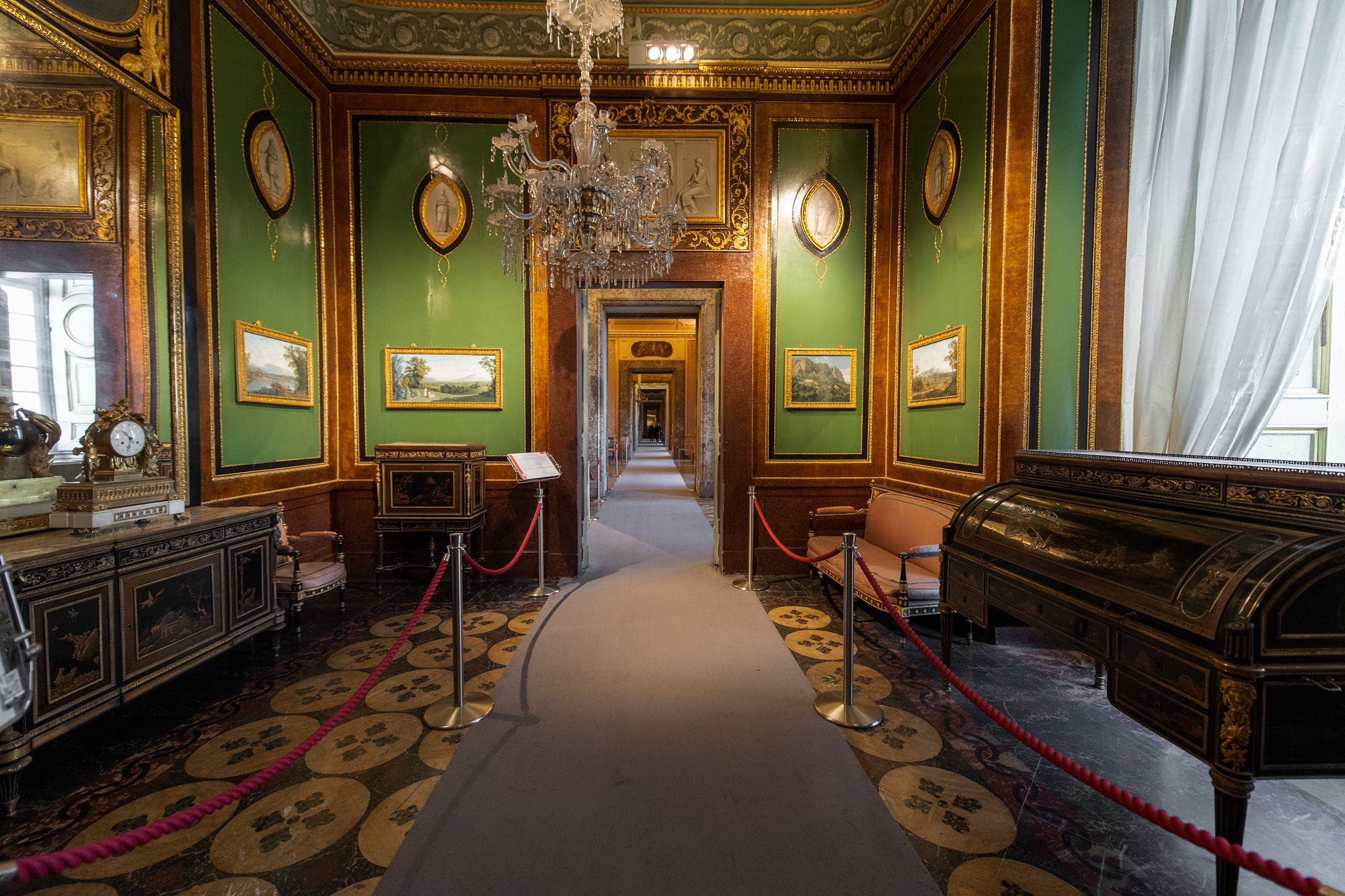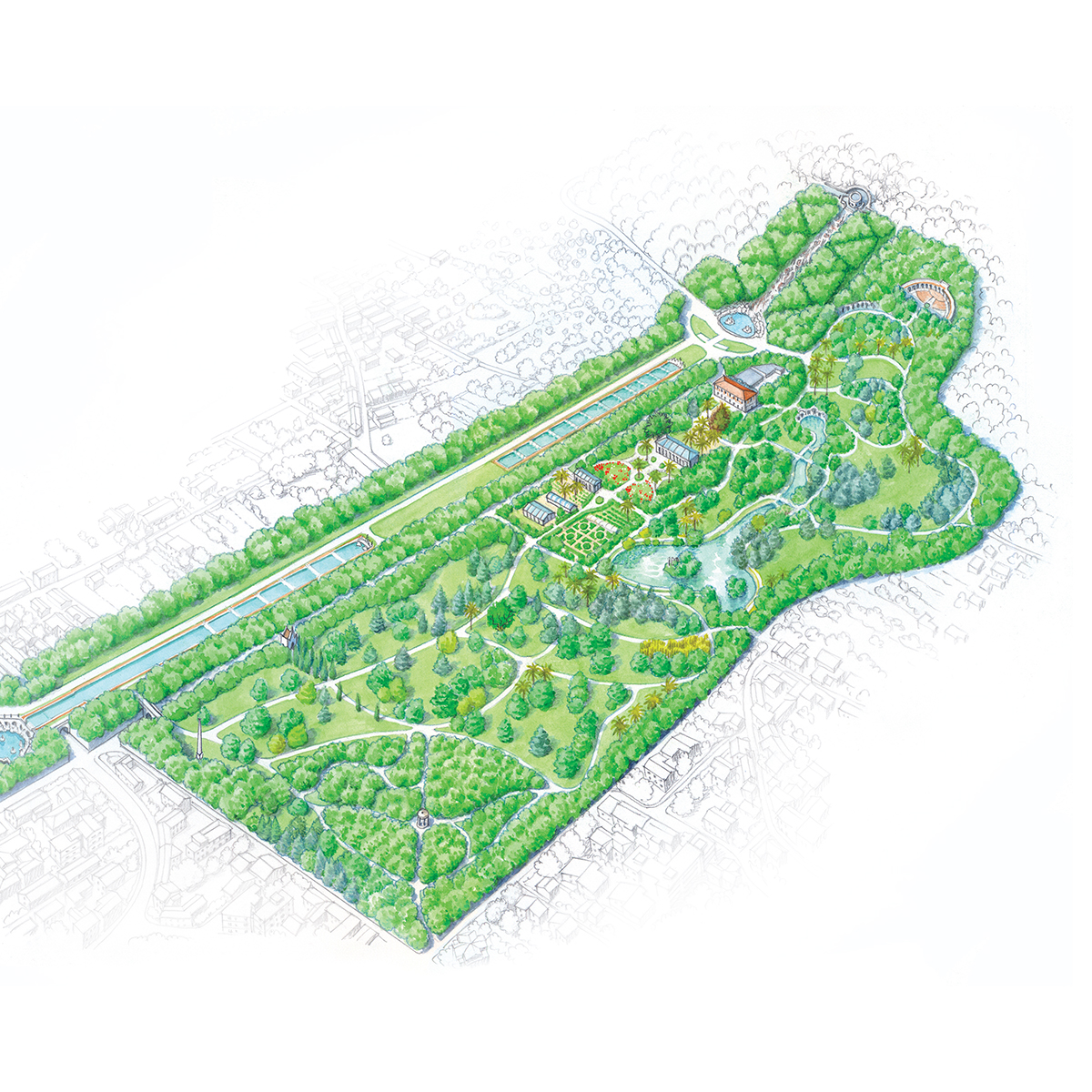The King’s private space
Past the Four Seasons Rooms we find an intimate and cozy, but extremely refined environment. It is Ferdinand IV’s study, where the sovereign retired to write and think in peace.
The king asked the court painter Jacob Philipp Hackert for advice and entrusted the work to Carlo Vanvitelli. The result is a severe and aristocratic atmosphere, obtained by a Neoclassic style of German inspiration, in line with the origins of Queen Maria Carolina. The seven medallions by Carlo Brunelli depicting the Virtues of Ferdinand’s Enlightened Kingdom and Hackert’s paintings with views of the royal sites most loved by the kings, all follow the rules of German neoclassicism.
But the masterpiece of the room is the furniture made by the well-known German cabinetmaker Adam Weisweiler from Frankfurt: the golden landscapes of the decorations respond to an oriental taste very common in the European courts of the eighteenth century.

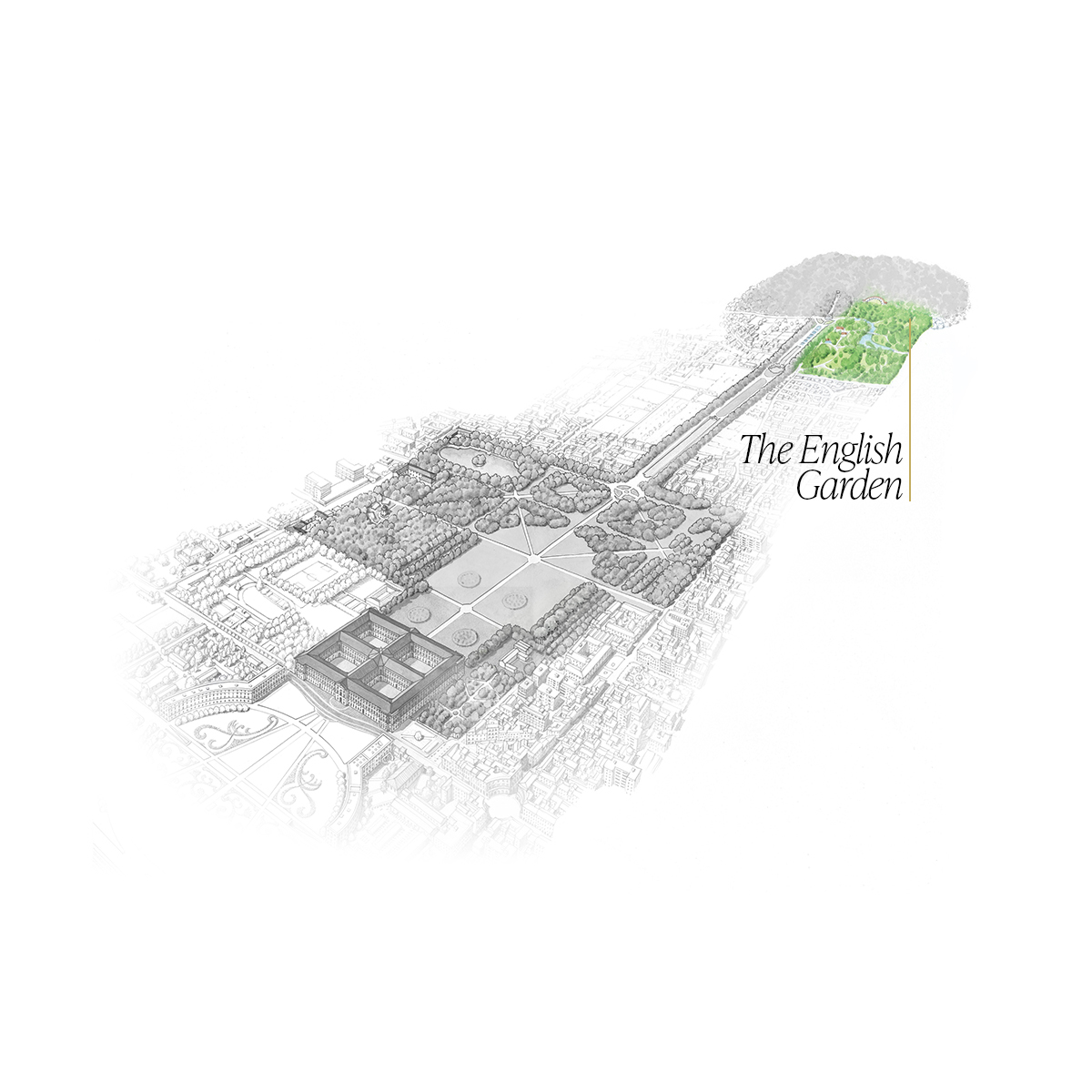
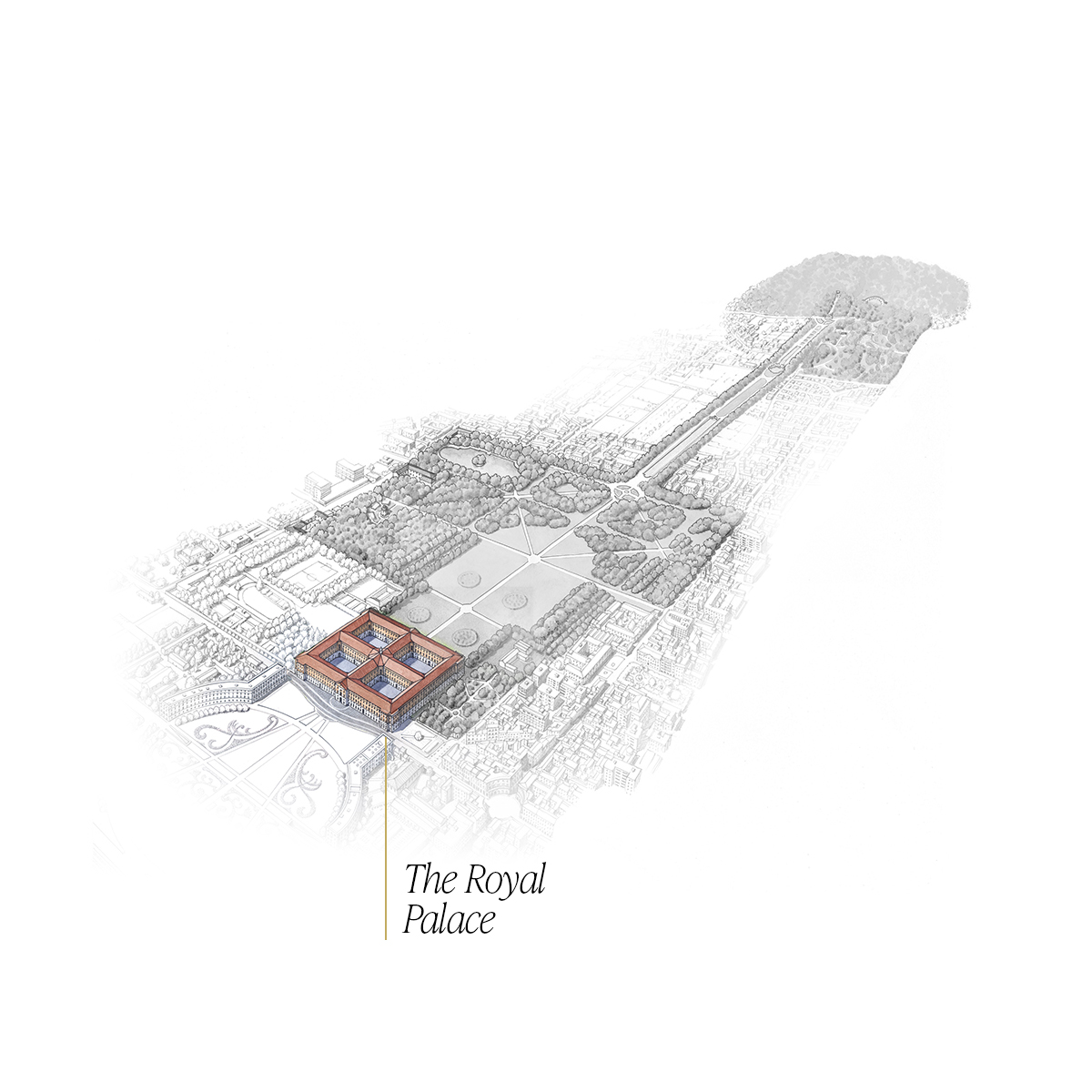
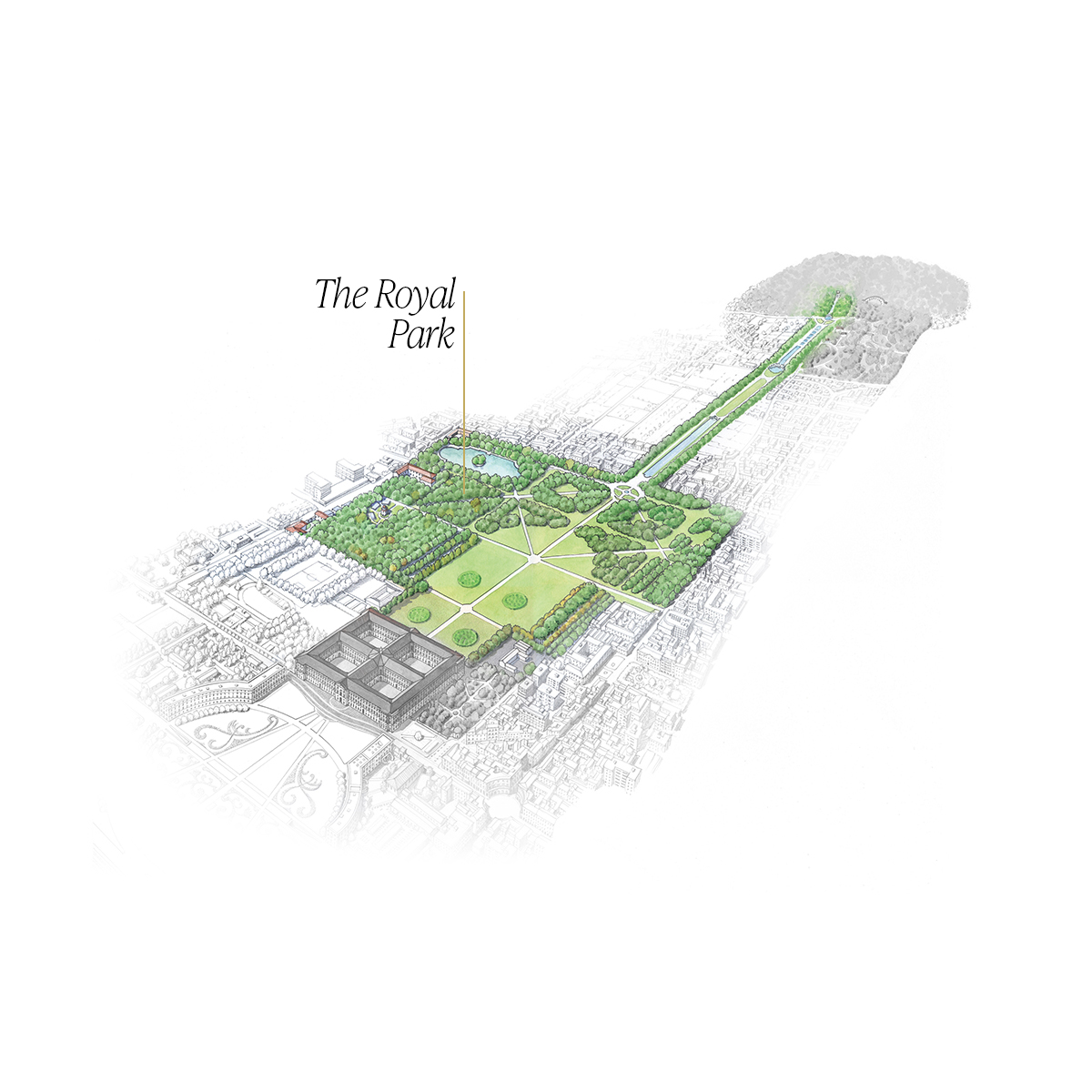
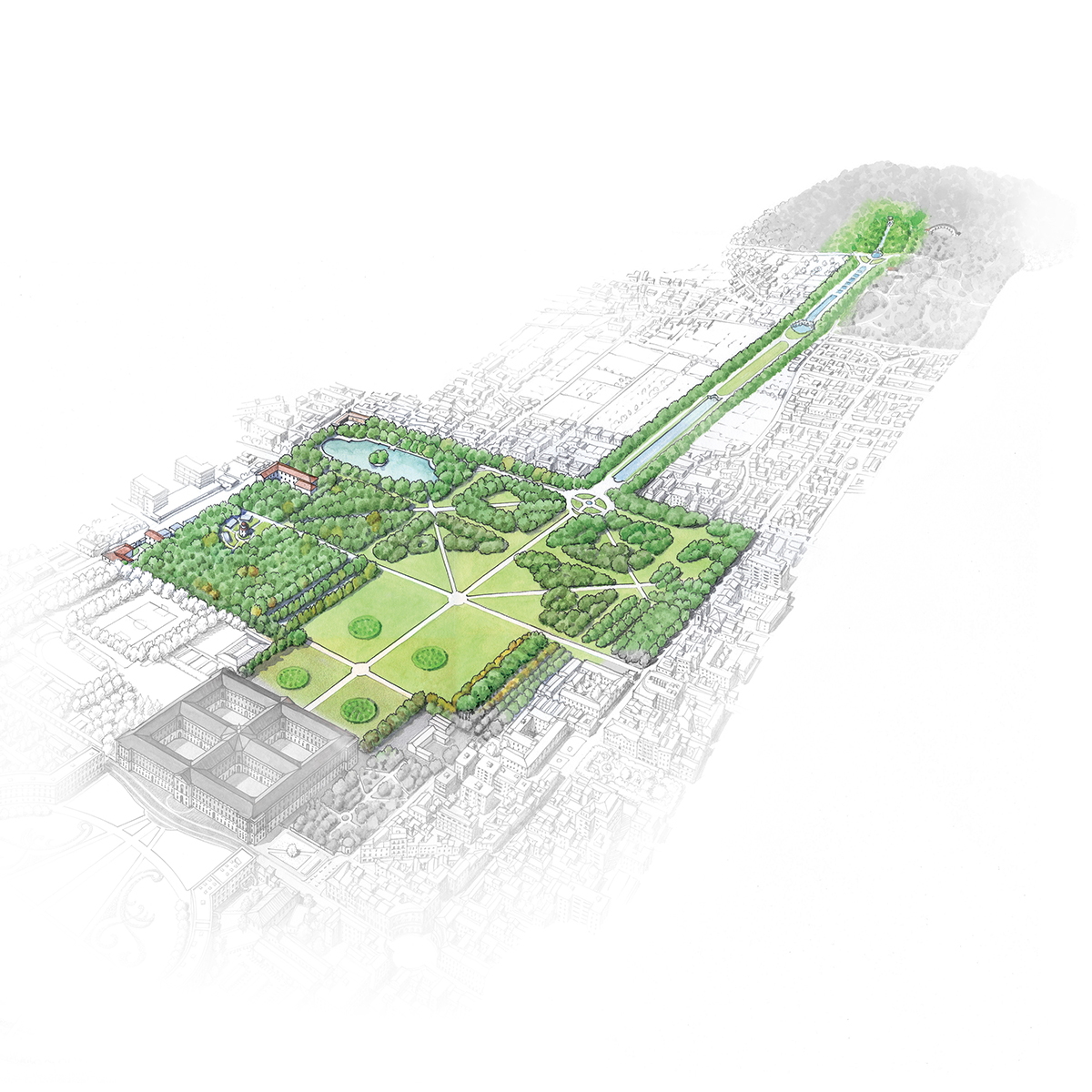
 Via d'acqua
Via d'acqua Castelluccia
Castelluccia Peschiera
Peschiera The Fountain of Dolphins
The Fountain of Dolphins The Fountain of Aeolus
The Fountain of Aeolus The Fountain of Ceres
The Fountain of Ceres The Fountain of Diana and Actaeon
The Fountain of Diana and Actaeon The Fountain of Venus and Adonis
The Fountain of Venus and Adonis The waterfall and Torrione
The waterfall and Torrione The Bosco Vecchio (Old Wood)
The Bosco Vecchio (Old Wood) The Margherita Fountain
The Margherita Fountain





